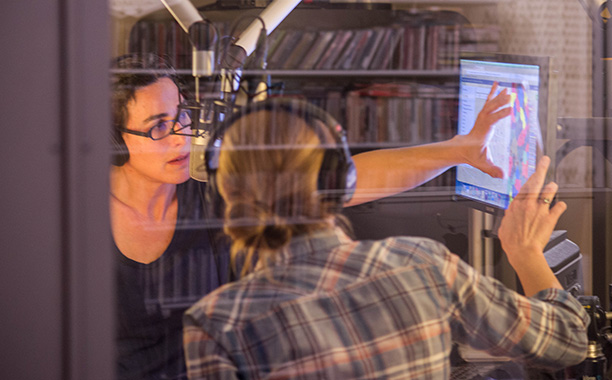I have misgivings about the podcast phenomenon Serial, and how can you not? It’s something of an aural In Cold Blood of our times, and it shares many of the same moral quandaries, using a real-life horror to build suspense and entertain. All I could do was cringe when reporter Sarah Koenig told convicted killer Adnan Syed that he seemed like a good guy and that she enjoyed talking to him. It took the man behind bars to point out to her how asinine a statement that was, that it had nothing to do with his guilt or innocence. But as Truman Capote’s book overcame queasiness (at least for me) with sheer narrative greatness, Serial earns its keep with its look inside the deeply flawed worlds of law and order (and journalism).
Another ramification of the show is economics. In a Financial Times piece, Sarah Gordon and Shannon Bond argue that the popular podcast may have pointed the way forward for journalists seeking new revenue streams in our disrupted age. I doubt that, unless every story is going to have soap-ready elements and attractive “characters” and be presented like a crime drama. There will be a second season of Serial, but it’s difficult to imagine a single one about the impact of gerrymandering, for instance. From Gordon and Bond:
“While Serial may not represent a real departure from storytelling and reporting through the ages, it may do something more useful, and that is to provide a convincing model of how such reporting can be paid for. According to Edison Research, about 39m Americans, 15 per cent of the over-12 population, listened to a podcast last month, up from 12 per cent in 2013 and 9 per cent in 2008. Making money from them has, however, proved tantalisingly difficult. Paying per episode has not taken off, and providing potential advertisers with predicted audience size has been a very inexact science.
But as Serial has taken off, it has captured the attention of advertisers. Sponsored from the outset by email marketing provider MailChimp, it is now also supported by website publisher Squarespace, Amazon’s audio publishing arm Audible and NYT Now. These companies, themselves products of the digital revolution, see new opportunities in the close connection that forms between listeners and the voices in their ears.
‘We’re seeing brands get very interested [in podcasts] because they see it as a way to have an intimate connection with listeners,’ says Matt Lieber, co-founder of Gimlet Media, a new Brooklyn-based podcasting venture.
According to its chief executive Adam Sachs, Midroll, a podcast advertising company that places commercials in more than 150 shows, charges rates of between $20 and $30 per thousand impressions (calculated on a projected number of downloads per episode) — about five times the cost for traditional radio advertising. MailChimp says it paid in the range of $25-to $40 per thousand impressions for Serial. With downloads far exceeding the producers’ initial estimates, MailChimp ‘is getting a very good deal,’ says Emily Condon.
MailChimp has benefited not just from its paid advertising but from the social media conversation. Even a mangled pronunciation of MailChimp from the company’s in-show ad has received more than 3,100 mentions (#MailKimp) on social media, according to Brandwatch. The company says it does not measure sign-ups resulting from podcast advertising — and Audible also declined to discuss the impact of itsSerial ads — but Mark DiCristina, MailChimp’s marketing director, told Ad Week magazine that the company had seen a rise in sign-ups since the show started.
Originally funded chiefly by the popular US radio programme This American Life, Serial may not need many ‘sponsors’ (as podcast producers call their advertisers) for a second season.”

